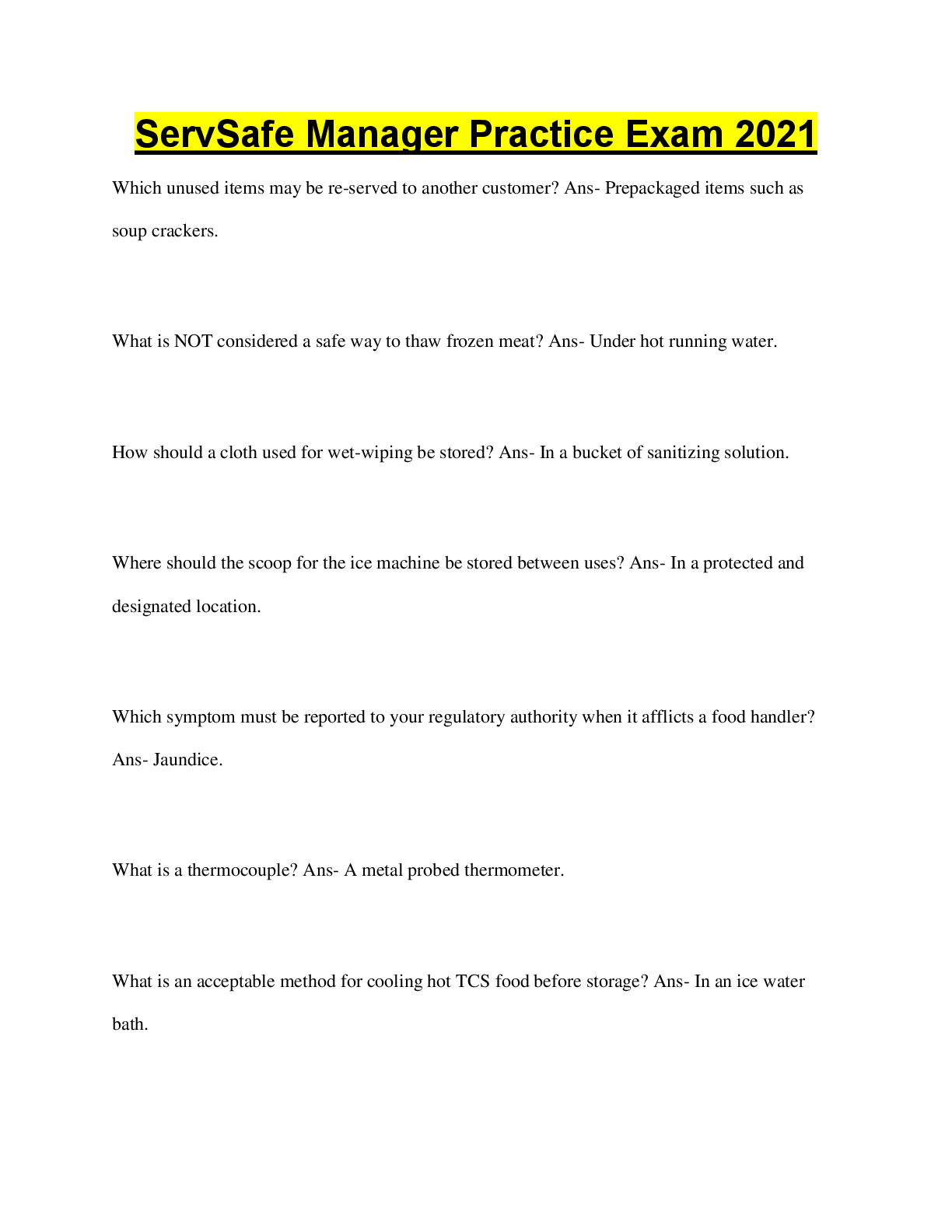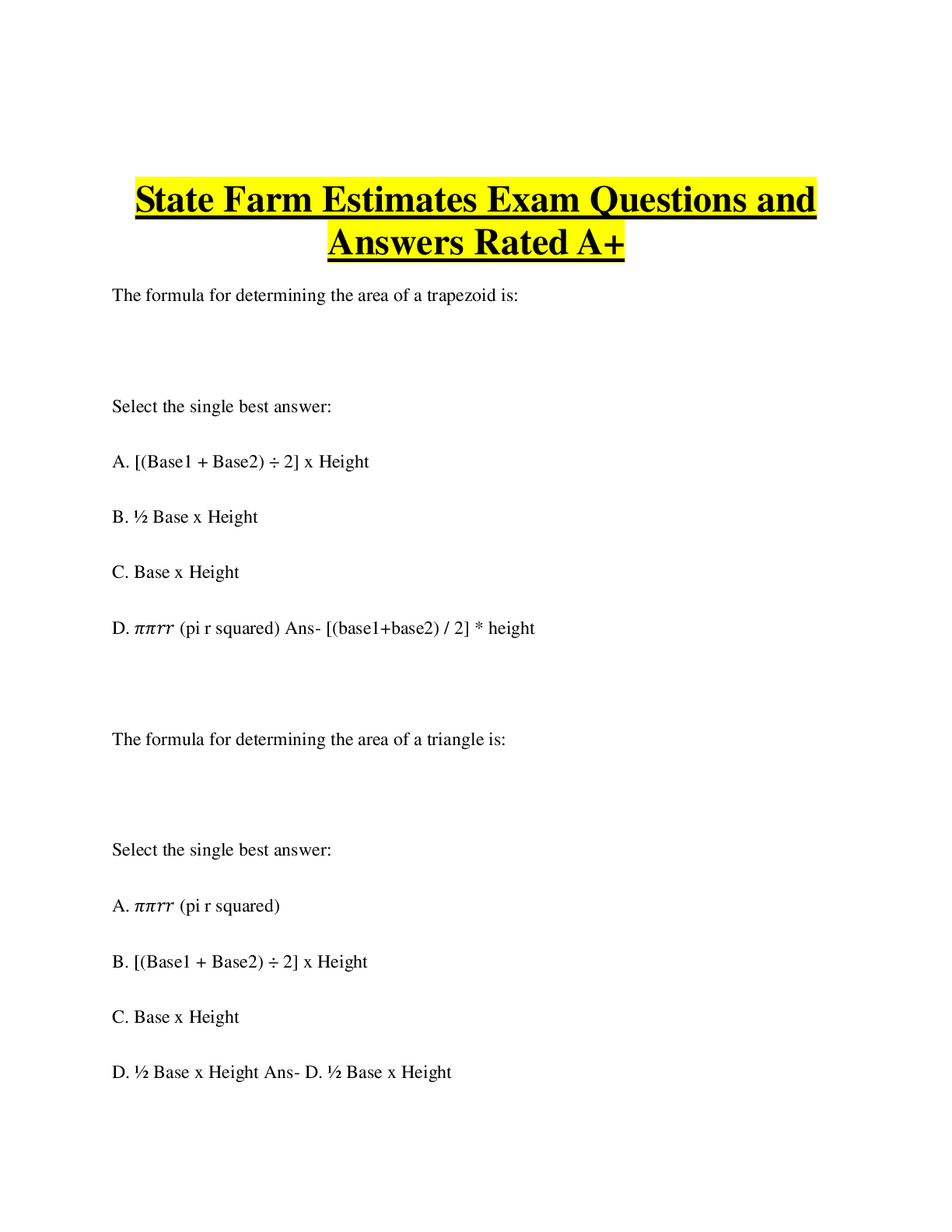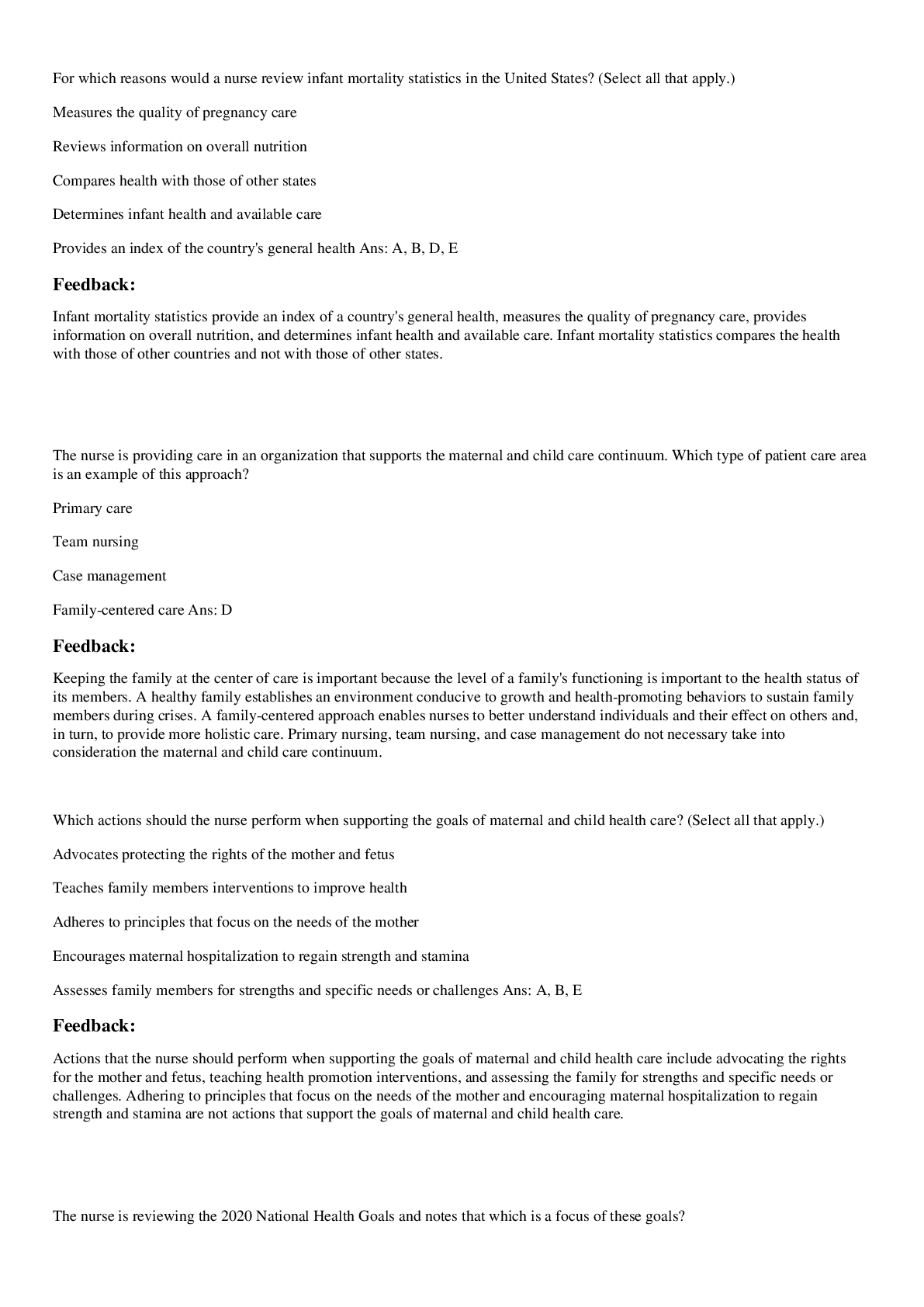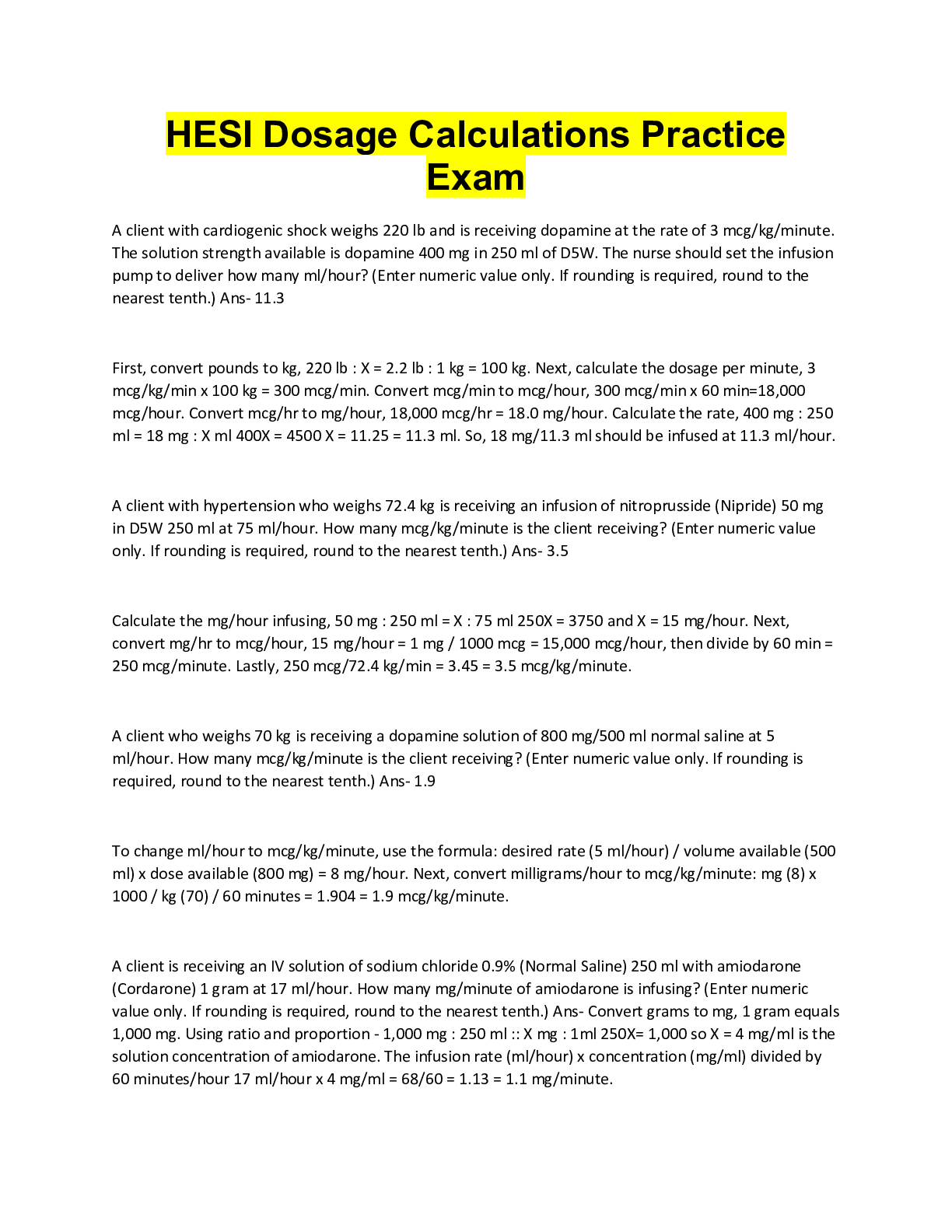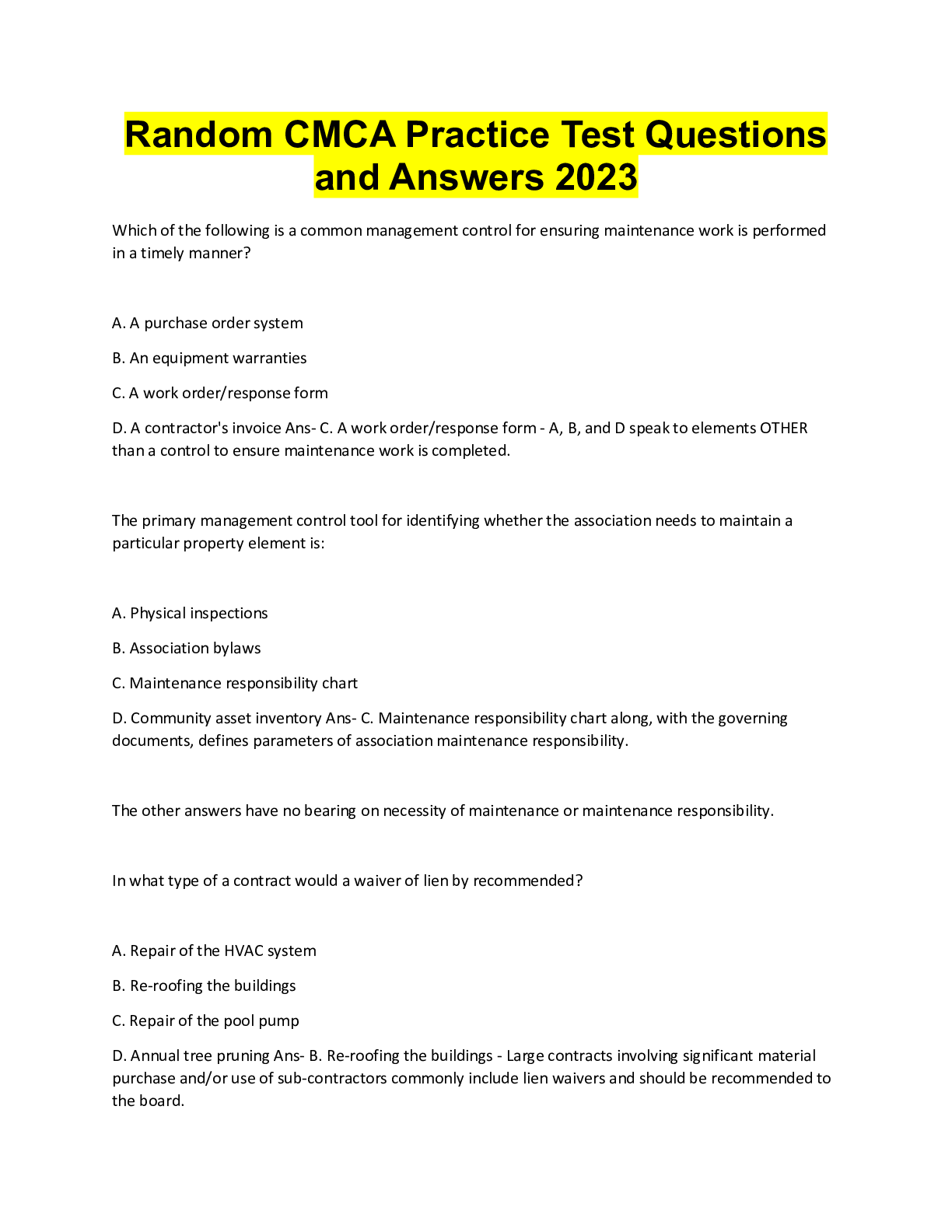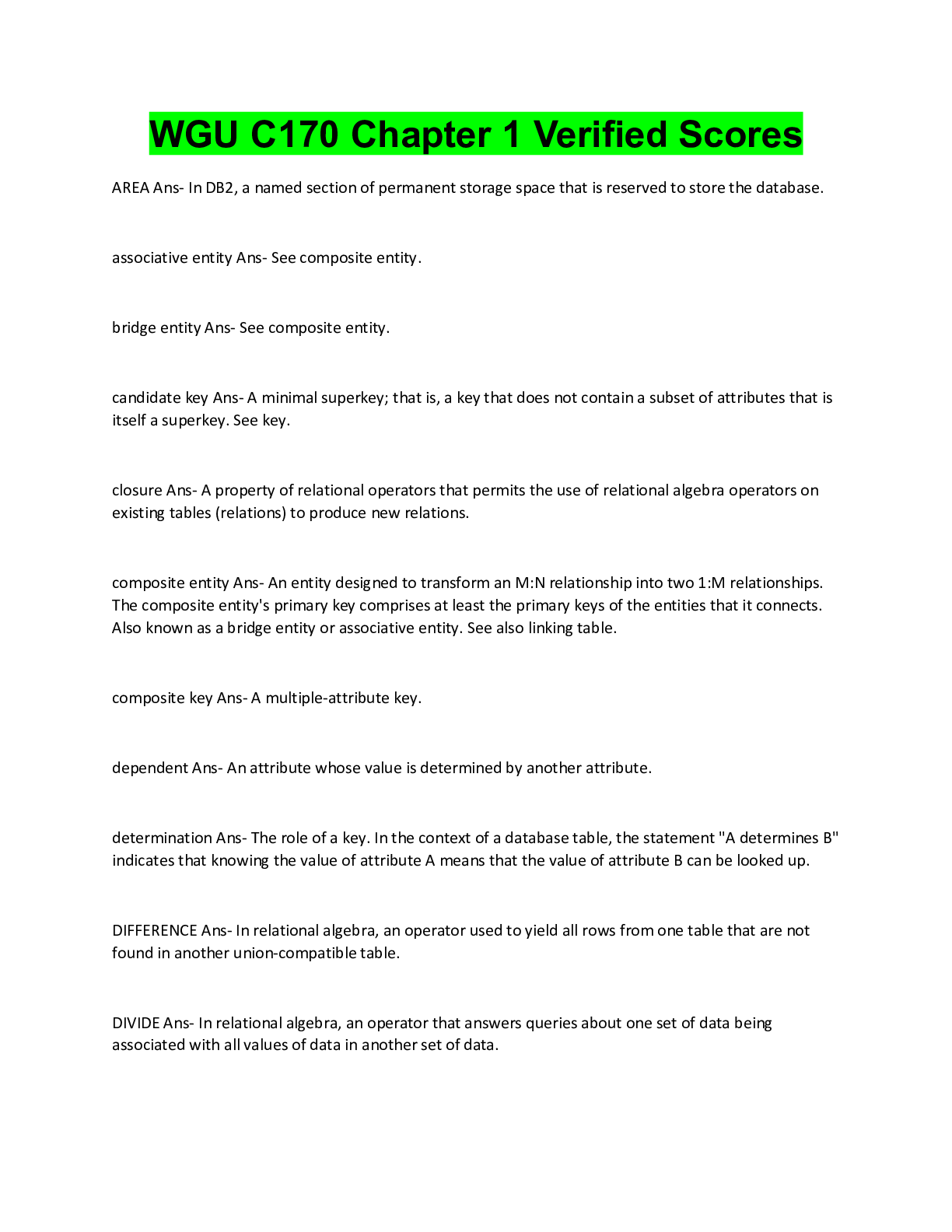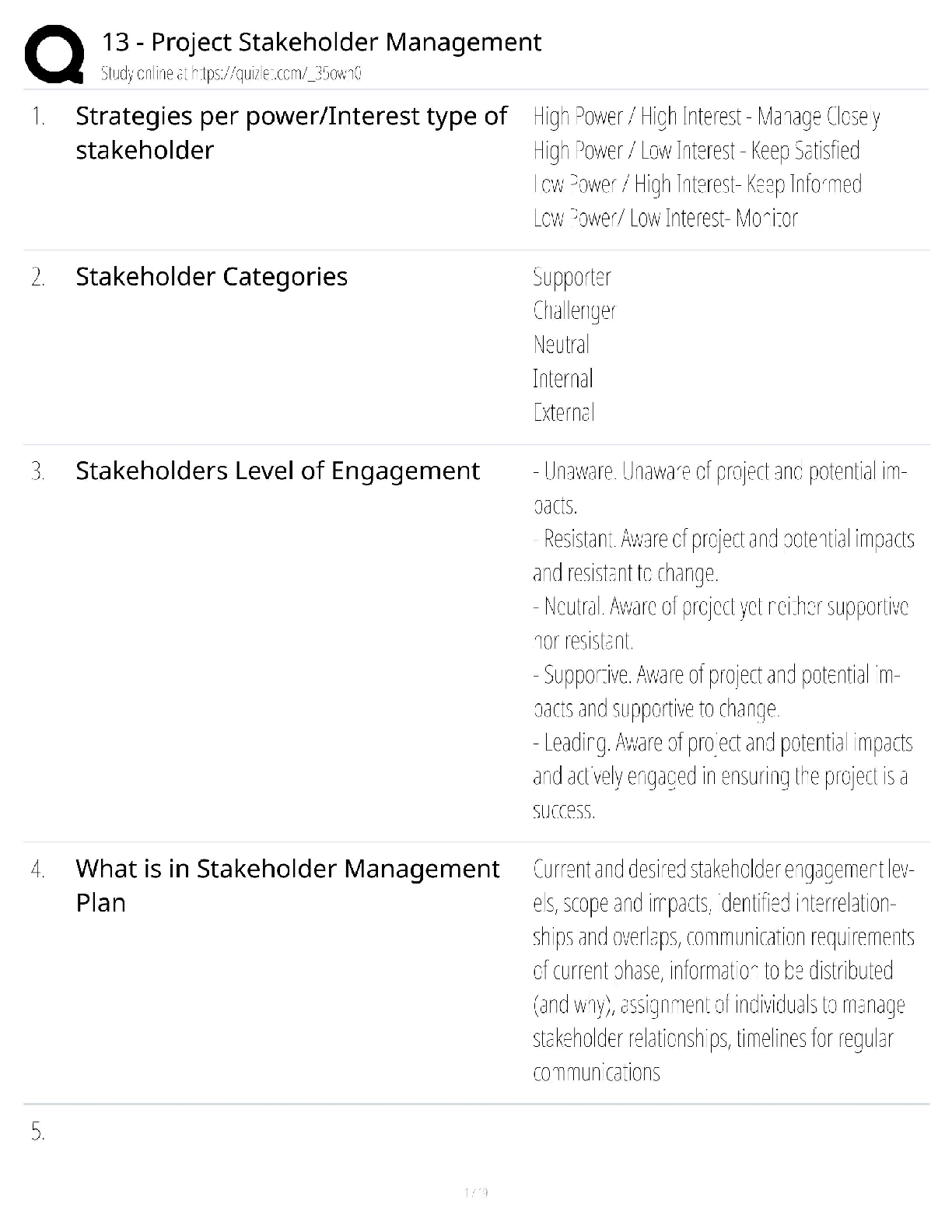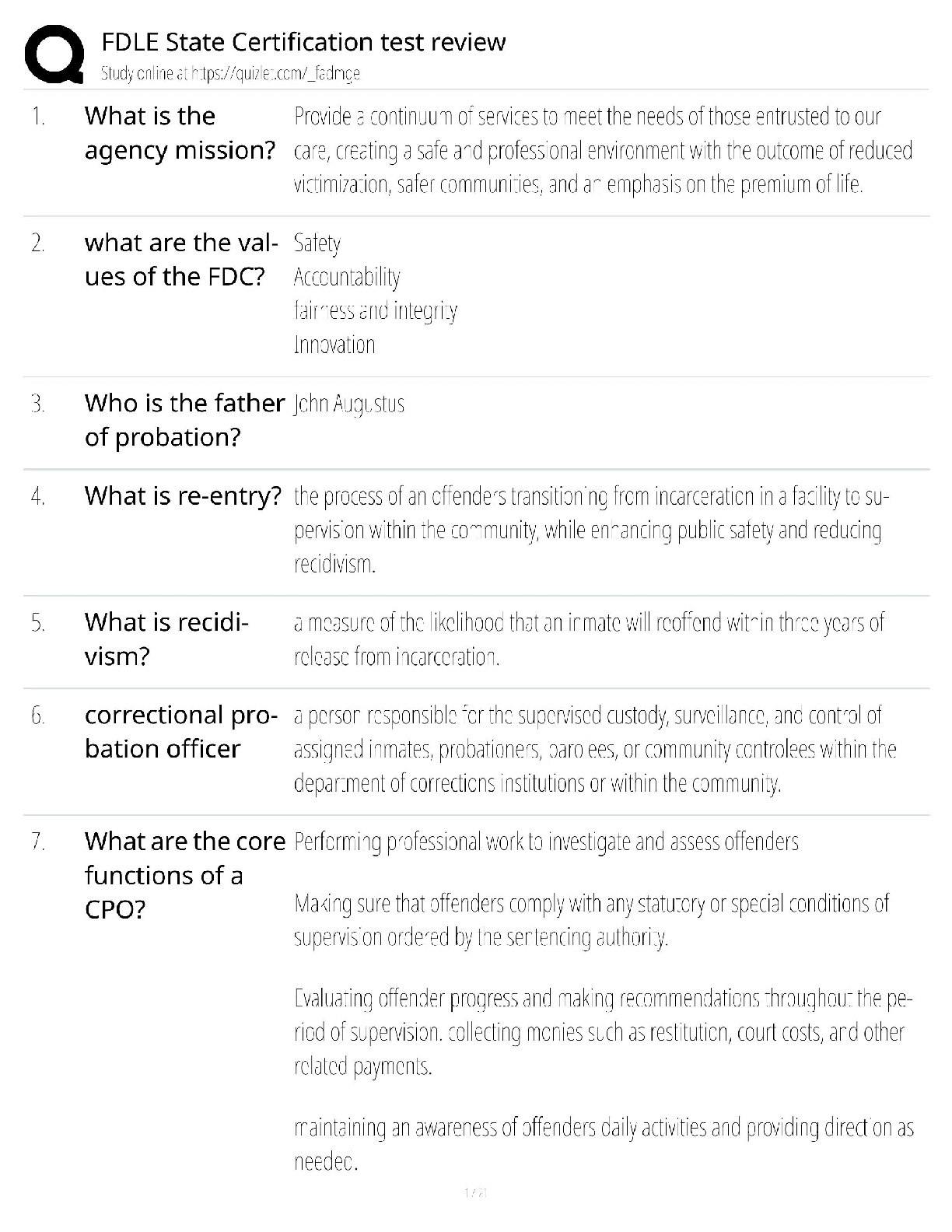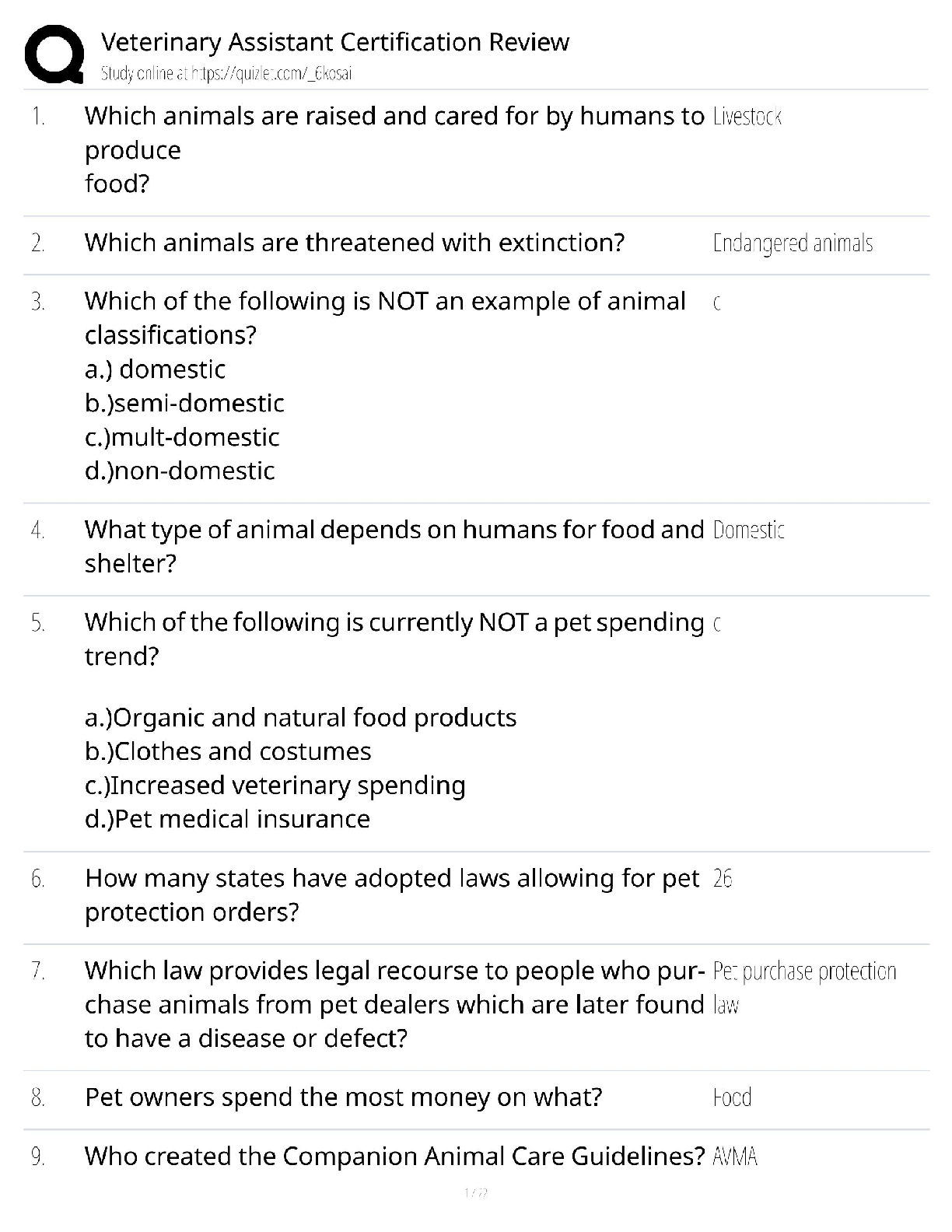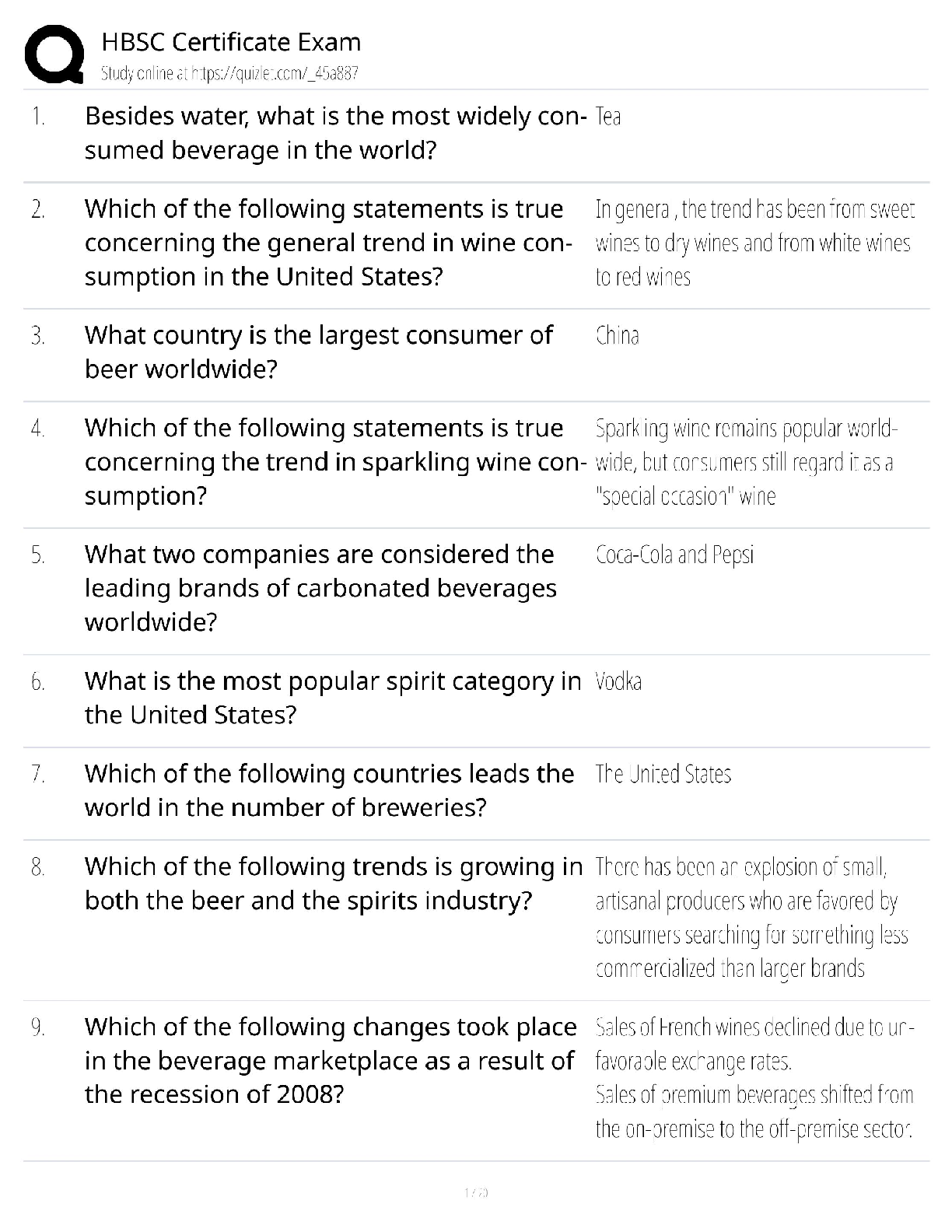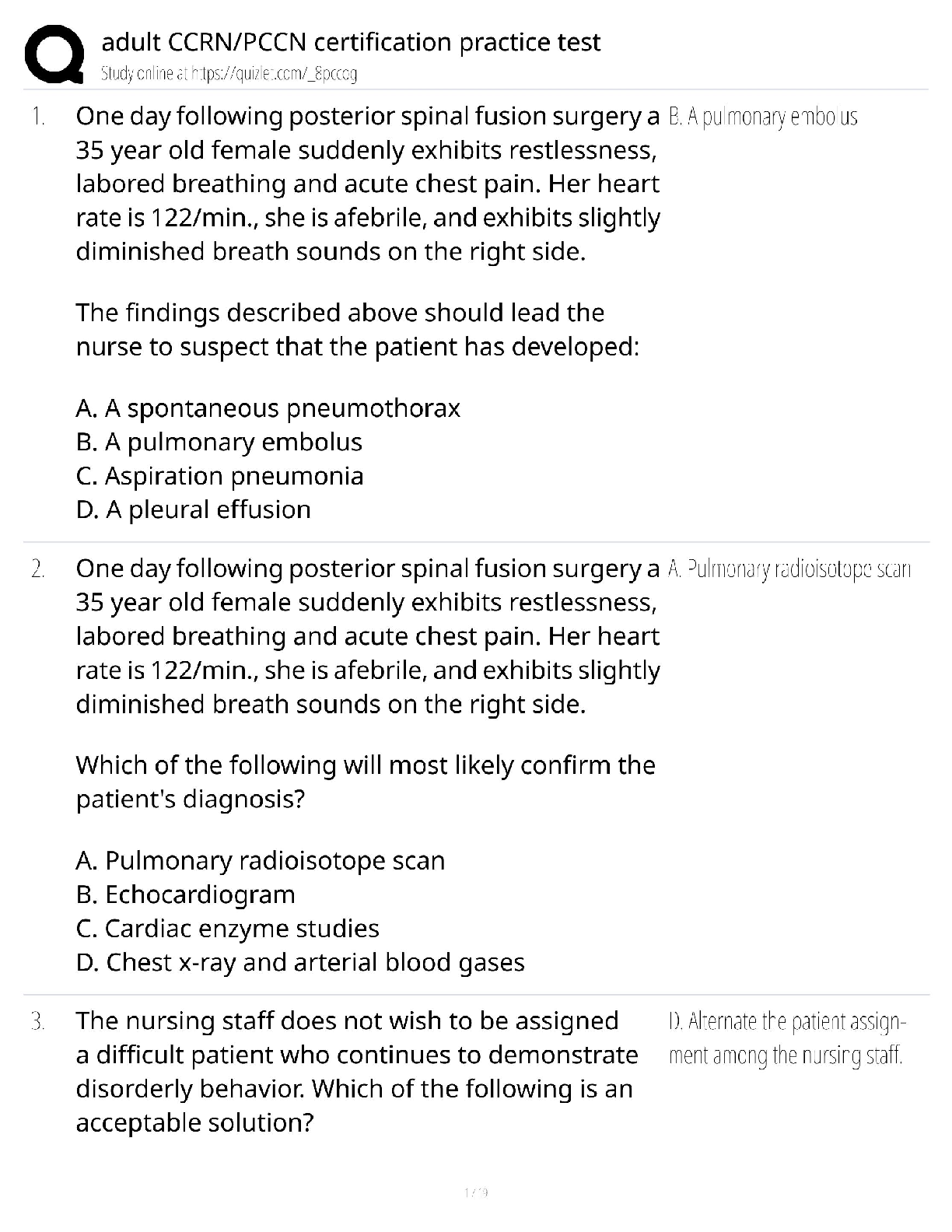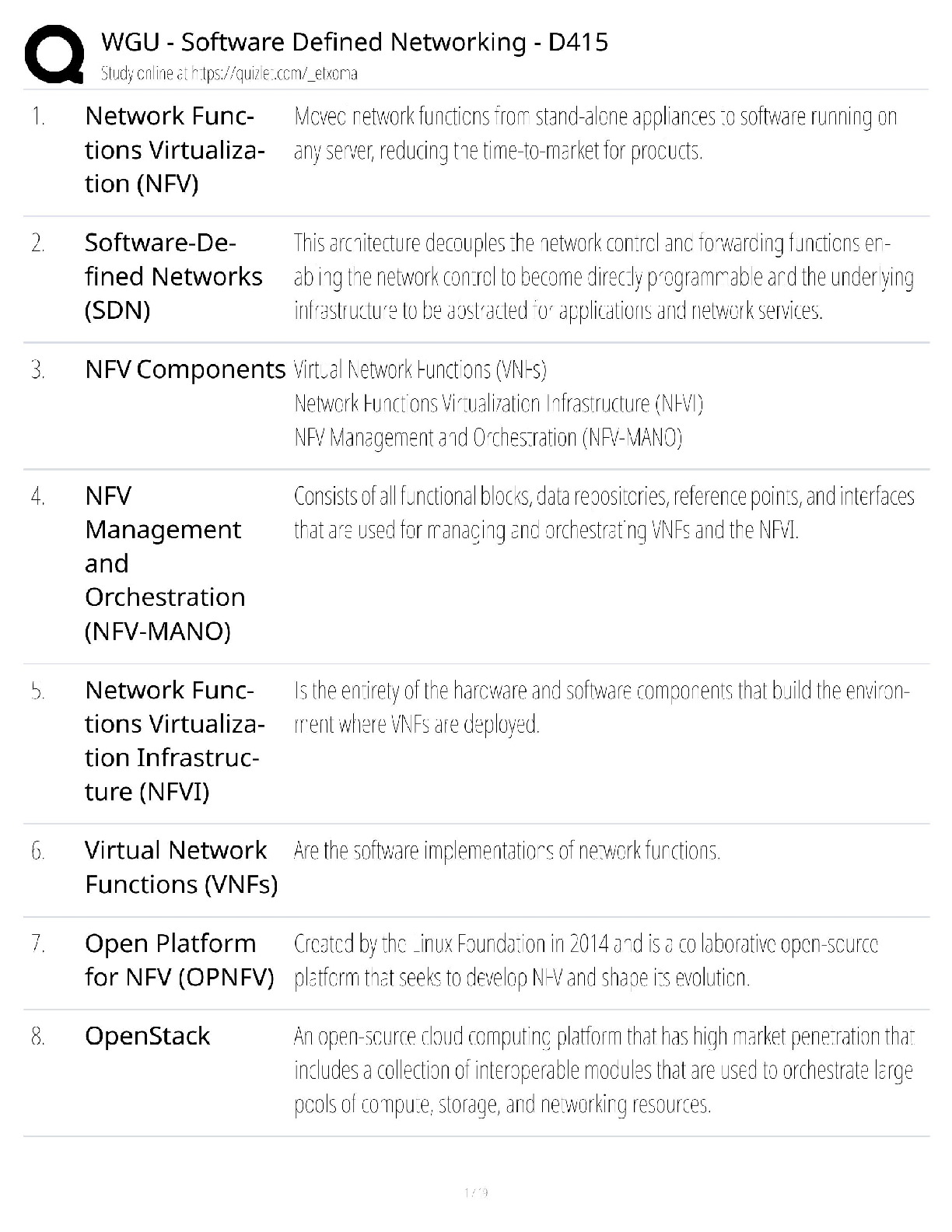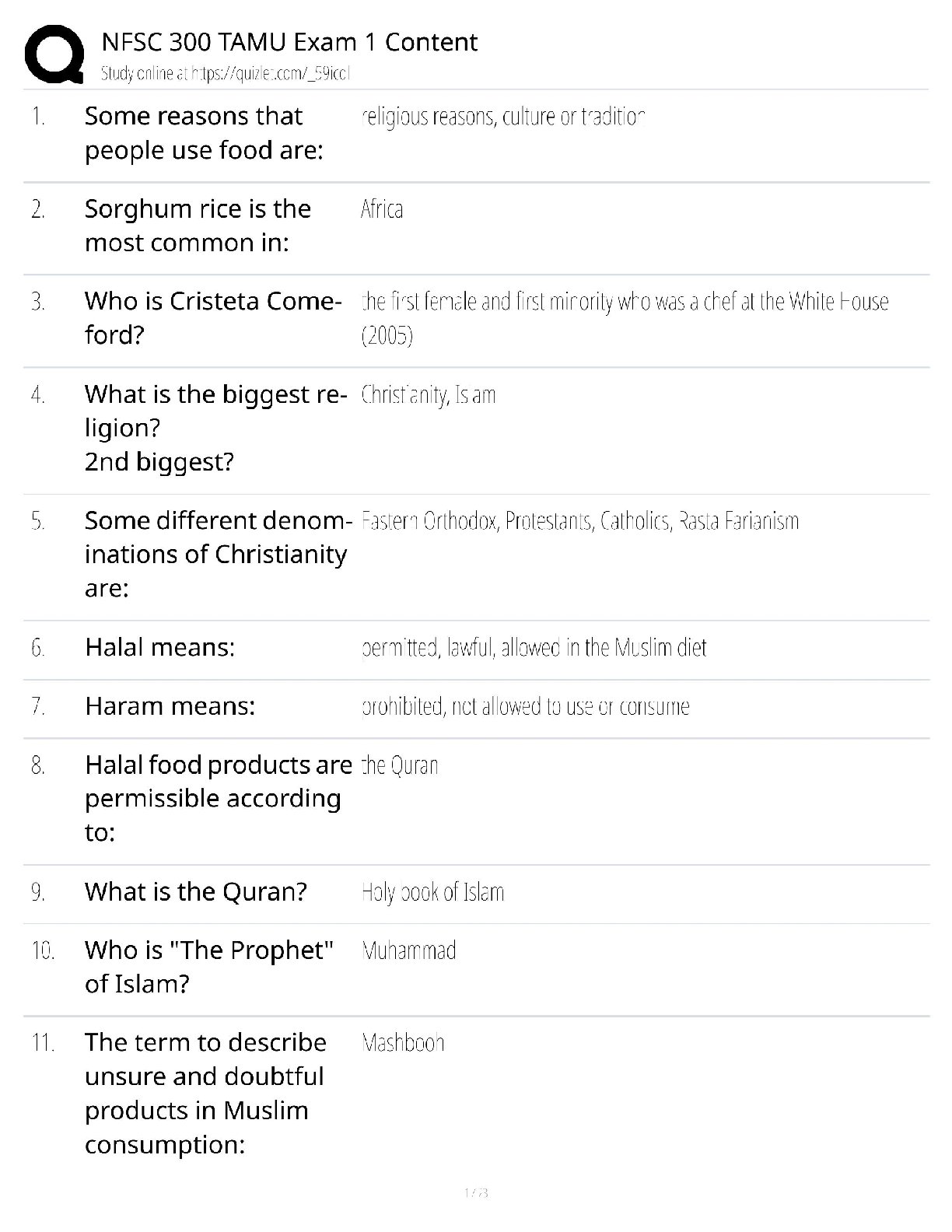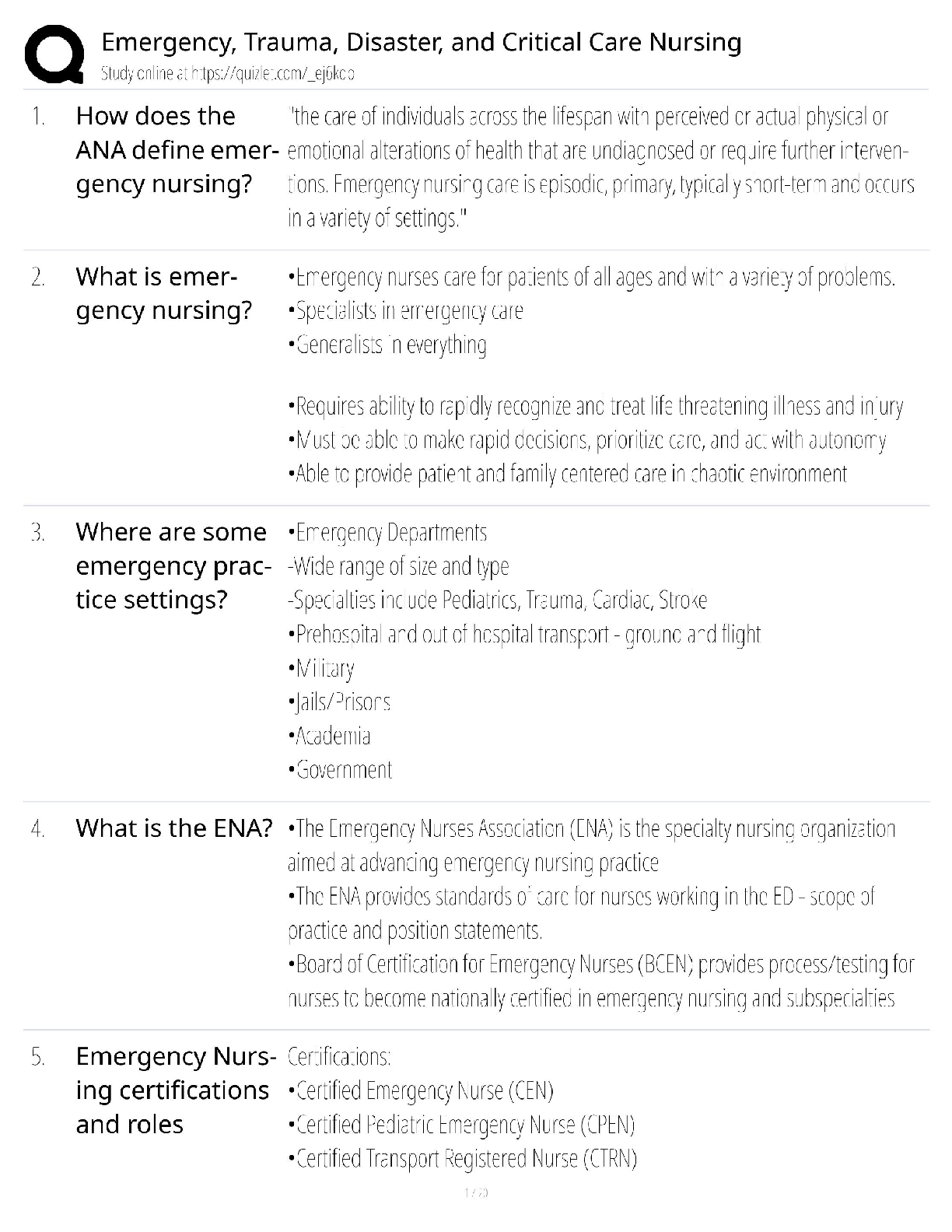Food and Nutrition > QUESTIONS & ANSWERS > ServSafe Manager 7th Edition - Study Guide Answer (All)
ServSafe Manager 7th Edition - Study Guide Answer
Document Content and Description Below
Define the requirements for the designation "foodborne-illness outbreak" Ans- - Two+ people have the same symptoms after eating the same food. - An investigation is conducted by state & local regul ... atory authorities - The outbreak is confirmed by a laboratory analysis 2. List the groups that are included in the high risk population for contracting a foodborne illness? Ans- - Elderly people - Preschool-age children - People w/ compromised immune systems (patients in hospitals, taking certain medications, under-going cancer treatments, organ transplant recipients) 3. List the 13 potentially hazardous foods as discussed in the text. Ans- - Milk & dairy products - Shell eggs - Meat: beef, pork & lamb - Poultry - Fish - Shellfish & crustaceans - Baked potatoes - Heat-treated plant food (cooked rice, beans & vegtables) - Soy proteins - Sprouts & sprout seeds - Sliced melons, tomatoes & leafy greens - Untreated garlic & oil mixtures 4. Define and give an example of a biological contaminant? Ans- An illness causing microorganisims that cause food borne illness. They include: viruses, parasites, fungi, mushroom, sea-food toxins & bacteria. 5. What Acronym reminds us of what is needed for the growth of micro-organisms and what does each letter stand for? Ans- FATTOM (Food, acidity, temperature, time, oxygen & moisture) 6. Define the requirements for the designation "foodborne infection" Ans- A person eats food containing pathogens, which then grow in the intestines and cause illness 7. Which microorganisms are likely to be found in raw oysters? Ans- Vibrio vulnificus, 8. What are the requirements that are needed for bacteria to grow and reproduce? Ans- FATTOM 9. List 5 items that could lead to the contamination of food? Ans- 1. Purchasing food from unsafe sources 2. Failing to cook food adequately 3. Holding food at improper temperatures 4. Using contaminated equipment 5. Poor Personal Hygiene 6. Storing cleaning chemicals near food in the dry-storage area 10. Several customers were diagnosed with scombroid poisoning after eating mackerel at a local seafood restaurant. What could have caused this and how could it have been prevented? Ans- By purchasing the mackerel from a reputable supplier who practices strict time temperature control 11. An employee is preparing sandwiches in a deli. List some ways he/she might contaminate food? Ans- - Not sanitizing equipment - Not practicing personal hygiene - Not following safety standards 12. While chopping vegetables, a food handler cuts her finger. What should she do? Ans- She should wash her hands, cover the cut with a clean bandage or a finger cot, put a single-use glove over it and return to work. 13. List the 5 proper procedures for washing hands in the correct order. Ans- 1. Wet hands & arms 2. Apply soap 3. Scrub hands and arms vigorously for 10-15 seconds 4. Rinse hands & arms thoroughly 5. Dry hands and arms with a single-use paper towel or a hand dryer 14. An employee at a fine-dining Italian restaurant comes to work with a sore throat and fever but still desires to work. What should the manager have him do? Ans- Restrict the food handler from the working with exposed food, utensils, and equipment (host or hostess) Exclude the food handler from the operation if you primarily serve a high-risk population The food handler can return to the operation and/or work with or around food where he or she has a written release from a medical practitioner 15. Make a list of employee behaviors that pose a hazard to the safety of food? Ans- - Scratching the scalp - Running fingers through the hair - Wiping or touching the nose - Rubbing an ear - Touching a pimple or an infected wound/boil - Wearing and touching a dirty uniform - Coughing or sneezing into the hand - Spitting in the operation 16. List different ways in which the temperature of food items can be checked. Ans- - Bimetallic stemmed thermometers - Thermocouples - Thermistors 17. What conditions indicate that a shipment of whole chicken is unacceptable? Ans- - purple or green discoloration around the neck - stickiness under wings and around joints - abnormal or unpleasant odor 18. What are the requirements for food items to be considered properly stored in a dry-storage area? Ans- - Out of sunlight - 6in off the ground - 50 - 70 degrees - 50 - 60% humidity 19. What does the acronym (FIFO) stand [Show More]
Last updated: 2 years ago
Preview 1 out of 19 pages
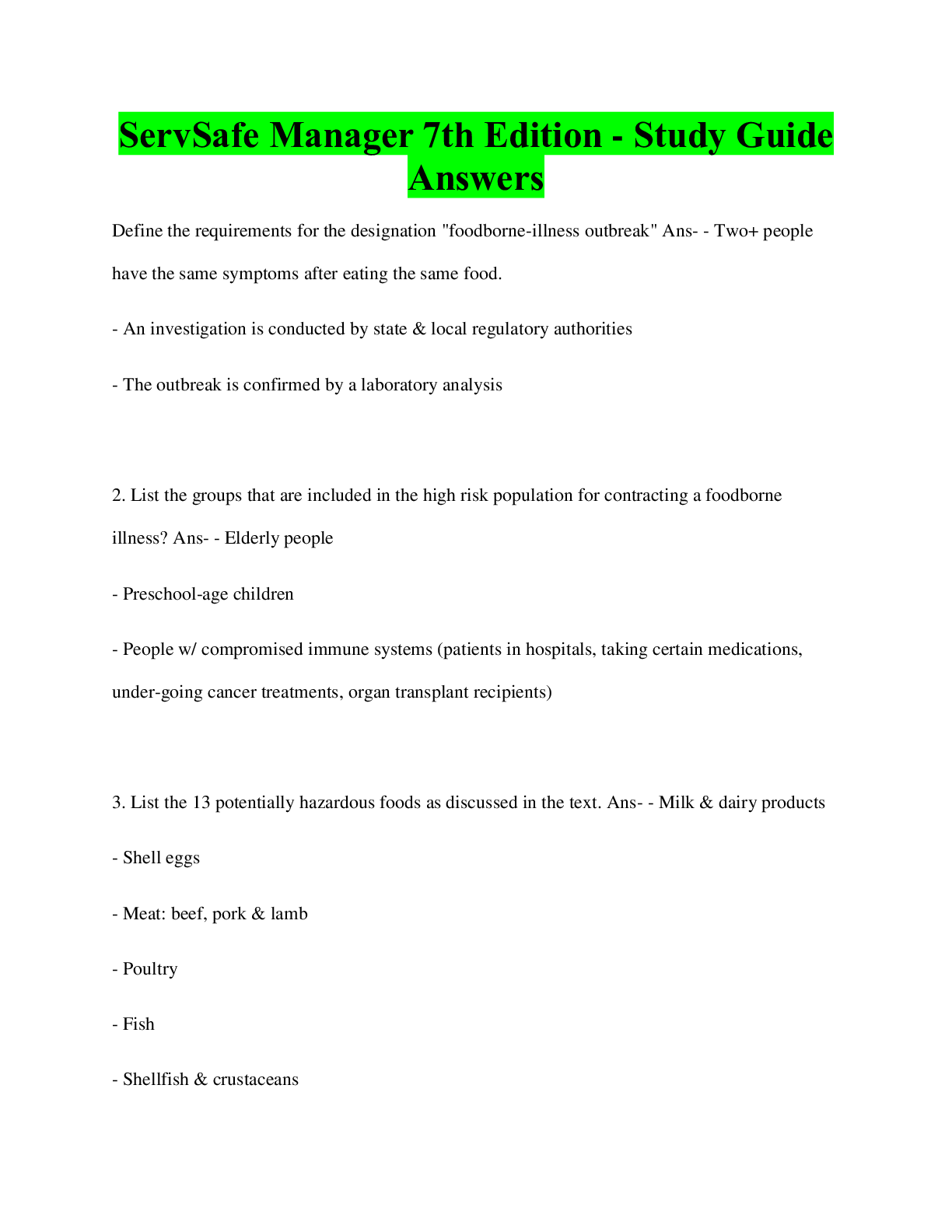
Buy this document to get the full access instantly
Instant Download Access after purchase
Buy NowInstant download
We Accept:

Reviews( 0 )
$9.00
Can't find what you want? Try our AI powered Search
Document information
Connected school, study & course
About the document
Uploaded On
Feb 12, 2023
Number of pages
19
Written in
All
Additional information
This document has been written for:
Uploaded
Feb 12, 2023
Downloads
0
Views
86

